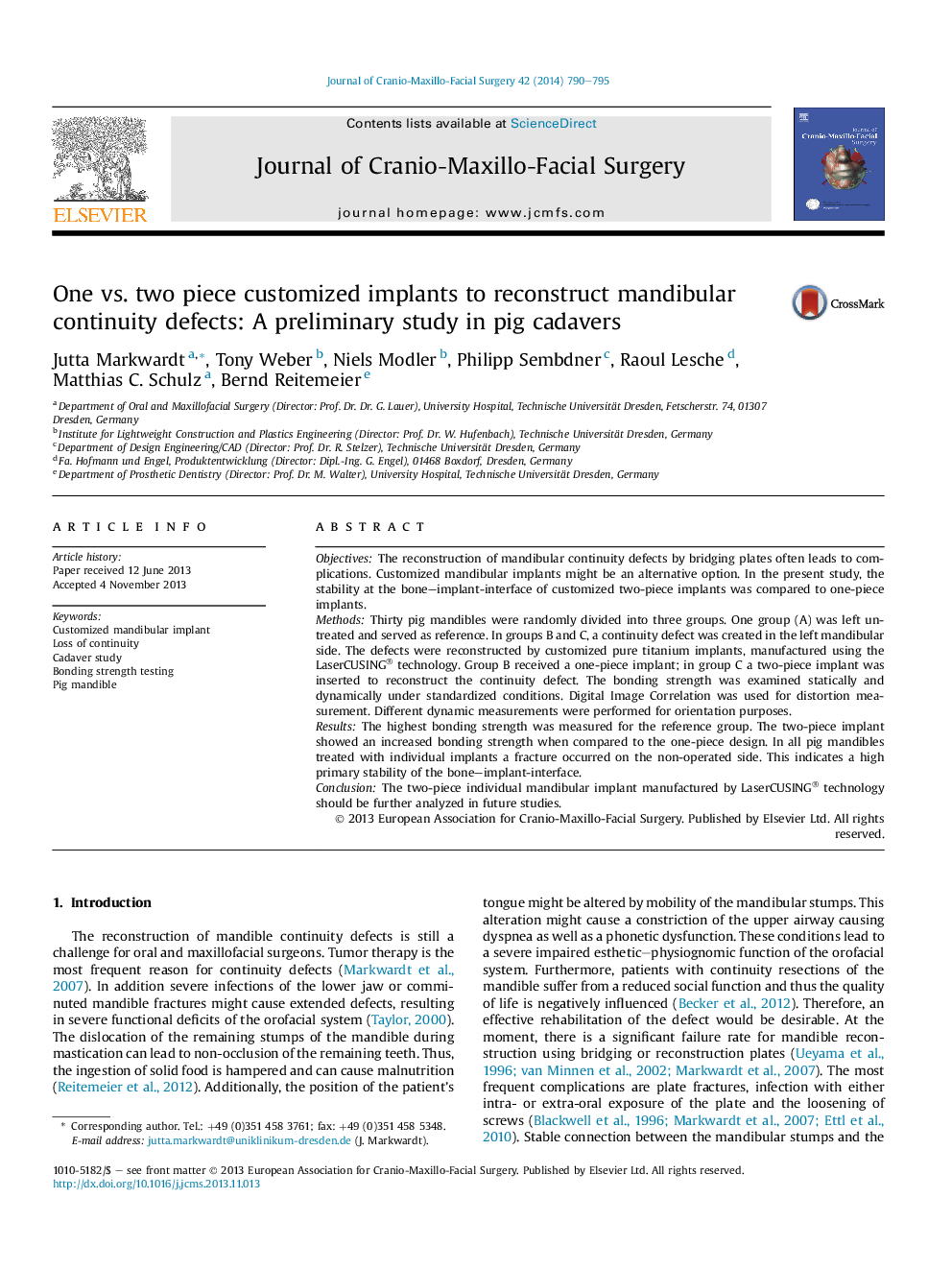| Article ID | Journal | Published Year | Pages | File Type |
|---|---|---|---|---|
| 3143296 | Journal of Cranio-Maxillofacial Surgery | 2014 | 6 Pages |
ObjectivesThe reconstruction of mandibular continuity defects by bridging plates often leads to complications. Customized mandibular implants might be an alternative option. In the present study, the stability at the bone–implant-interface of customized two-piece implants was compared to one-piece implants.MethodsThirty pig mandibles were randomly divided into three groups. One group (A) was left untreated and served as reference. In groups B and C, a continuity defect was created in the left mandibular side. The defects were reconstructed by customized pure titanium implants, manufactured using the LaserCUSING® technology. Group B received a one-piece implant; in group C a two-piece implant was inserted to reconstruct the continuity defect. The bonding strength was examined statically and dynamically under standardized conditions. Digital Image Correlation was used for distortion measurement. Different dynamic measurements were performed for orientation purposes.ResultsThe highest bonding strength was measured for the reference group. The two-piece implant showed an increased bonding strength when compared to the one-piece design. In all pig mandibles treated with individual implants a fracture occurred on the non-operated side. This indicates a high primary stability of the bone–implant-interface.ConclusionThe two-piece individual mandibular implant manufactured by LaserCUSING® technology should be further analyzed in future studies.
